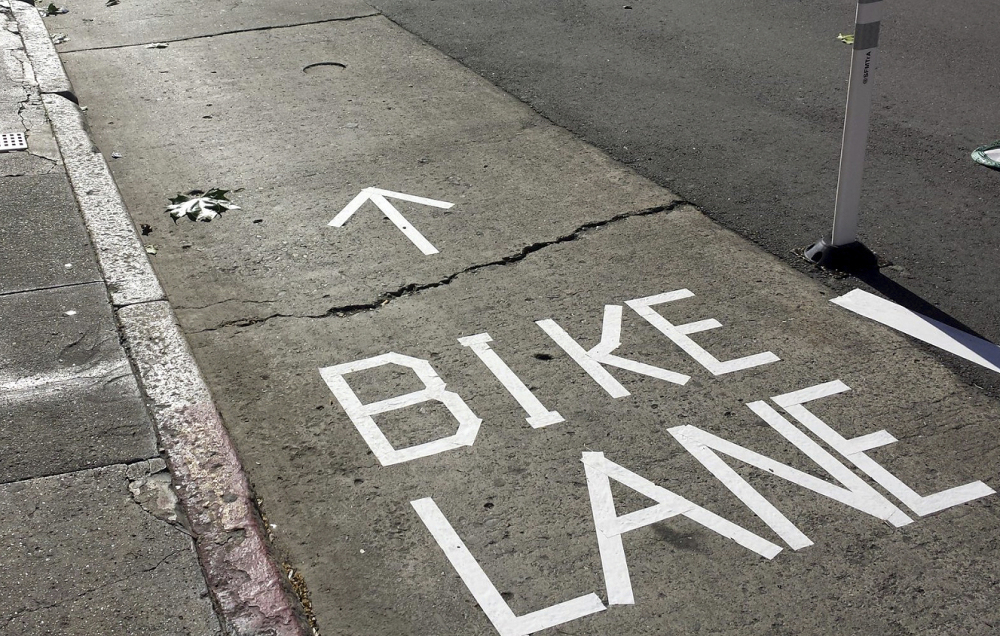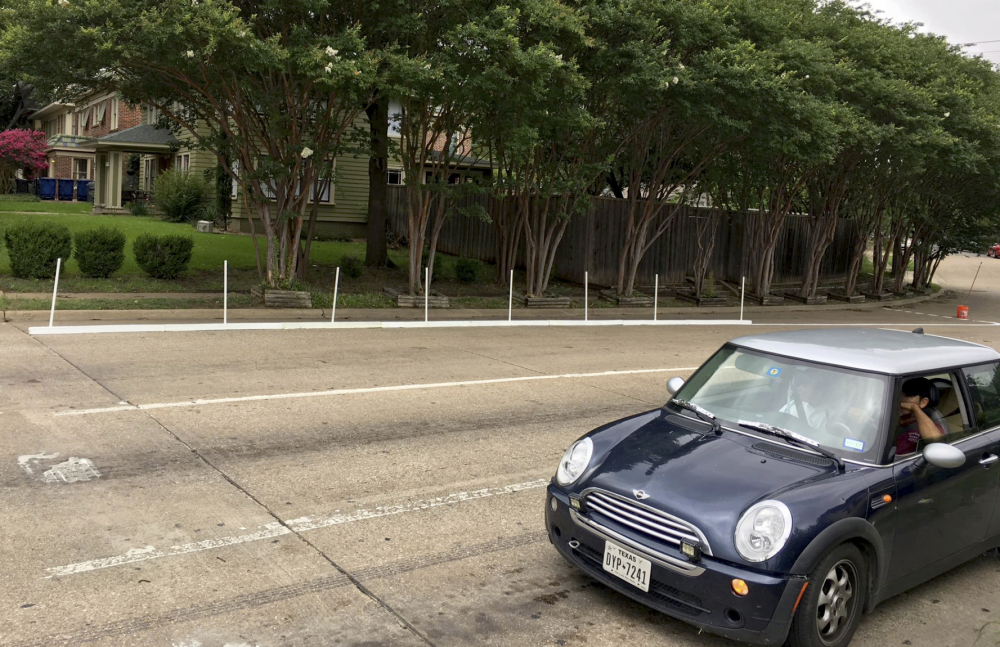DALLAS — A makeshift bike lane divider made of painted two-by-fours and PVC pipes lasted three days on a busy Dallas street last month before the city removed it, which was two days longer than its creators expected.
The $100 structure was the work of the Dallas Transformation Department, one of several like-minded groups of anonymous Twitter users who have taken a do-it-yourself approach to making road improvements in cities stretching from New York and Boston to San Francisco.
Activists say a flower planted in a pothole or a line of cones or toilet plungers to keep cars from drifting into bike lanes can have the magical psychological effect of getting drivers to slow down and watch for cyclists and pedestrians. Although the measures are meant to be temporary, they can show the public what could be and spur cities to make permanent improvements.
“These transformation groups are creating change, and we support that,” said Kathleen Ferrier, a spokeswoman for the Vision Zero Network, a group dedicated to eliminating traffic fatalities around the world. “What’s happening with guerrilla tactics is that they are creating more urgency. It’s helping people imagine and experience what change could be like.”
Last month’s project was the Dallas Transformation Department’s first, but it plans more.
“We knew it wouldn’t be permanent. It would take a few times, but we believe people should have the power to give their neighborhoods value,” said Layne, a group spokesman who declined to give his last name because the project was considered vandalism by the city.
City officials say it’s not that simple. Business owners complain when street parking is replaced with bike lanes, and firefighters worry that separated bike lanes could impede their emergency responses.
And there’s usually a shortage of funds, said Jared White, who manages Dallas’ bicycle transportation program within the Mobility and Street Services Department. Striping a buffered bike lane can cost $50,000 a mile or more if a crosswalk needs to be altered, and moving curbs to install bike lanes can cost millions, he said.
The unauthorized bike lane divider presented a safety hazard, said Auro Majumdar, an assistant director of transportation operations for Dallas.
“The bicycle lane endangered any bicyclist using the illegal lane by exposing them to head-on collisions with a motor vehicle legally travelling in the marked travel lane,” he said.
Despite concerns with how pop-up projects are installed, they are working in several cities. In San Francisco, the Transformation Department’s biggest success is a makeshift bike lane officials decided to keep until the city can install a permanent one.
“For me, it’s about empowering people to improve their own neighborhood,” Layne said.
Send questions/comments to the editors.




Success. Please wait for the page to reload. If the page does not reload within 5 seconds, please refresh the page.
Enter your email and password to access comments.
Hi, to comment on stories you must . This profile is in addition to your subscription and website login.
Already have a commenting profile? .
Invalid username/password.
Please check your email to confirm and complete your registration.
Only subscribers are eligible to post comments. Please subscribe or login first for digital access. Here’s why.
Use the form below to reset your password. When you've submitted your account email, we will send an email with a reset code.